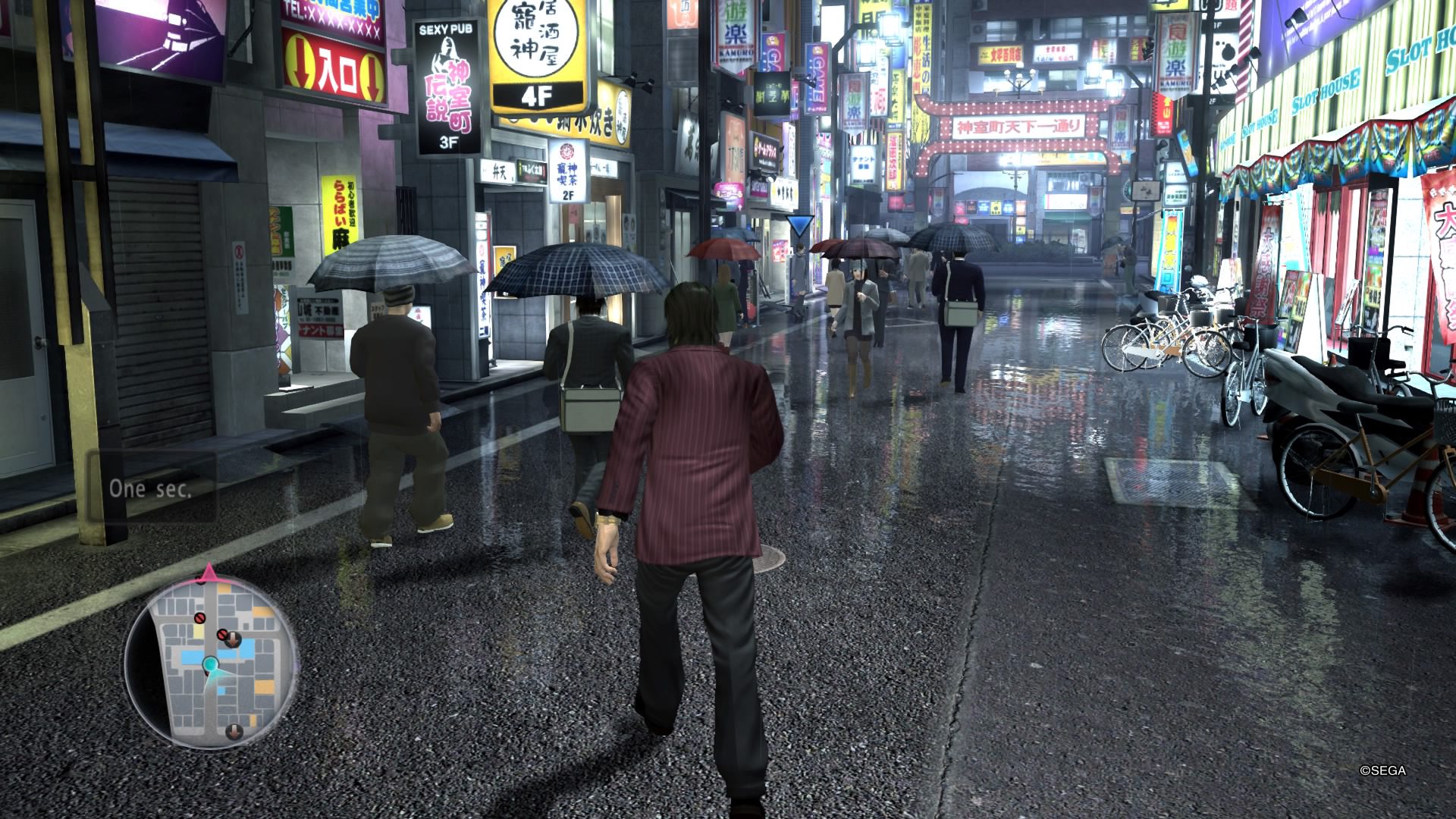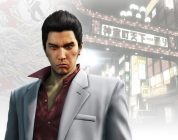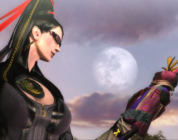Having a series span generations of consoles is not unusual. After all, why wouldn’t a successful game series want to push onward into the next iteration of hardware? We’ve seen this happen for decades now. There’s the current trend of remaking, remastering, or releasing modern console ports of older games that are making developers and publishers take a long hard look at their libraries. This is great for people who lack the resources, or space, to seek out older hardware and games to play the pieces of a series they are missing. In the case of the Yakuza series, that is no longer an issue. To commemorate the 10th anniversary, Sega released a remastered collection of Yakuza 3, 4, and 5. This may seem like a strange choice of games to commemorate the series, which now spans seven main series titles but it’s less strange considering the fact that Yakuza Kiwami and Yakuza Kiwami 2 are remakes of the first two games. This collection, while not quite as exciting as continuing the Kiwami line, didn’t need as much of a visual overhaul to be appreciated on the PS4 hardware since all three were PS3 titles. What is going to be important here is how these games perform on the PS4, and what you get for your money. My first exposure to the Yakuza series was with my review of Yakuza 5 back when it first came out on PS3 and I’m excited to dig further into the series and revisit Yakuza 5 after all this time.
Right away, the Yakuza Remastered Collection stands out. Whereas most collections I’ve come across include everything on a single disc or file and you select which game you want to play from a main menu, this collection comes as three completely separate games. On the digital storefront, I entered the provided code which unlocked the collection for me, but I had to do some digging in order to download and add all three games to my library. The initial activation only granted me access to Yakuza 3. I had to follow a set of instructions in order to get the other two games. I’m sure this is less confusing with the physical collection, which looks amazing, but for a digital release, this seems overly complicated. This could be related to the fact that they were released individually over time. That said, in many ways I kind of liked seeing each game listed on my PS4, versus one that just labeled Yakuza Remastered Collection, especially considering this collection consists of 3, 4, and 5. It takes the guesswork out and allows me to download a single game if I wanted versus a collection.
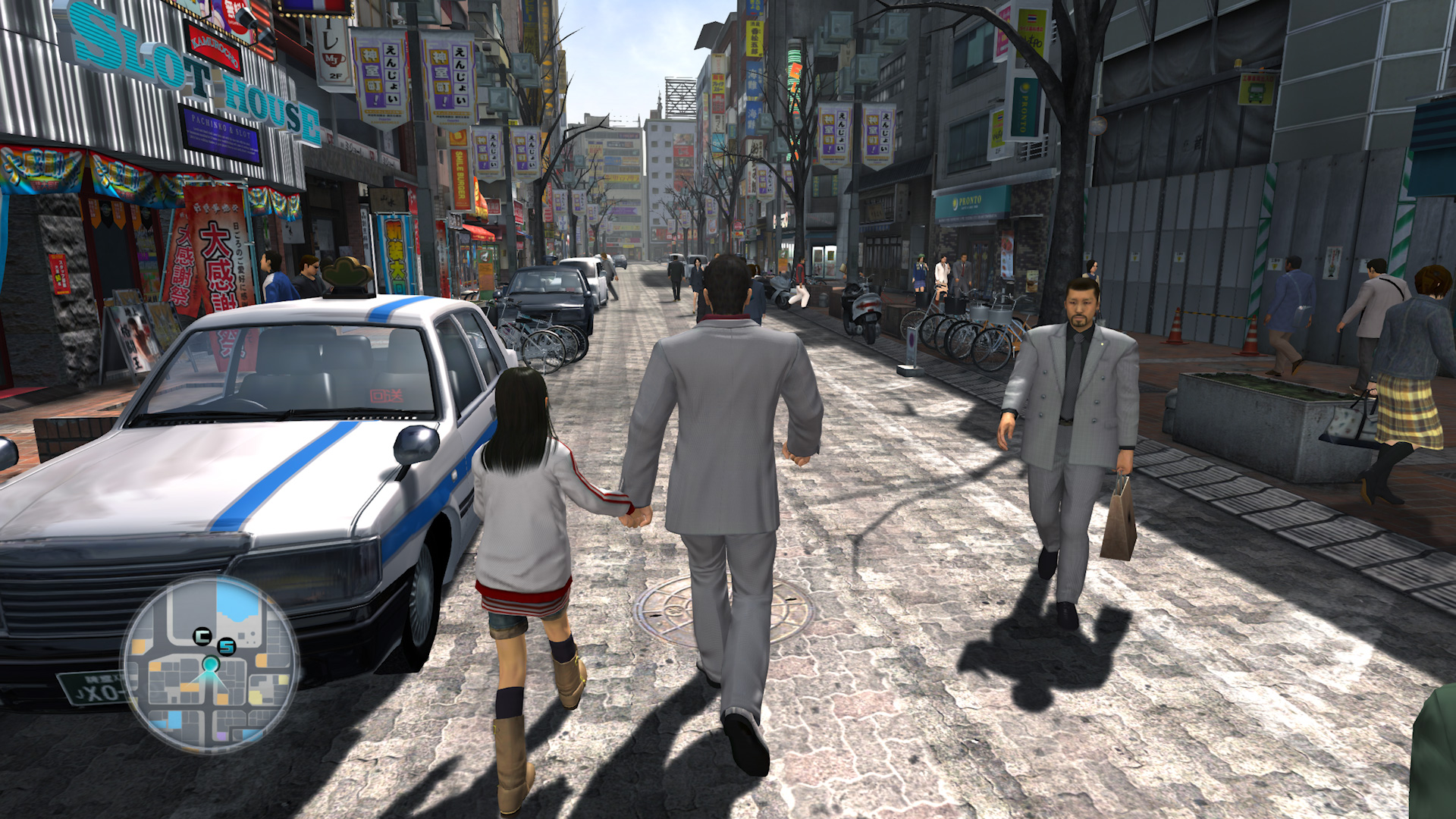
Each game runs at a steady 60fps and 1080p and looks overall fantastic. Though it is pretty obvious that these are older games that have been rendered at higher resolution, it doesn’t detract from the overall experience. Yakuza consistently uses excellent camera work during its cinematics, using specific angles, camera movement, and deliberate composition combined with good editing, making the Yakuza games some of the most engaging to watch and these entries are no exceptions. Good storytelling and masterful use of the camera (which video games often still struggle in) stands the test of time and beats out the aging graphics. Yakuza 3 is obviously the roughest, being the oldest, having lower resolution textures and some pretty stiff animation. The good news here is that each game gets progressively better looking as the texturing and modeling improves dramatically between each entry. Smoother, more natural animation, weather effects, reflections, and textures all get better and better. As a whole, this collection is a great way to look at the progression of visuals in gaming throughout the PS3’s lifespan.
Another thing that thankfully improves throughout the collection is the gameplay, specifically the combat. Yakuza 3, in particular, suffers from some clunkiness making fights against large groups difficult and bosses tend to block often and can be damage sponges. Yakuza 4 and Yakuza 5, however, improve the combat a ton and offer much more fluid gameplay along with more options and strategies to choose from. Yakuza 4 and 5 also change things up a bit by featuring more than one playable protagonist. Each character, while following the same basic controls and combos, feels different and this breaks up the game nicely in terms of the gameplay and the story. Combat is a 3D brawler style of play where using a combination of light and strong attacks builds up a meter which when full will allow for a finisher or special move. More of these moves are unlocked as you gain experience and level up, along with more health, and expanded combos. There is also a grapple, block, and dodge available and these maneuvers are important to keep in mind as some fights will have you relying heavily on them. Weapons and items can also be equipped that also change up the moveset but most of the game involves hand-to-hand battles.
As you go throughout the city, you encounter hostile and aggressive citizens who confront you. They feel like random encounters and they happen amusingly frequently. Moving into Yakuza 4 and 5 the combat is streamlined significantly and each changes slightly in level and skill progression. The combat, particularly boss fights, can be extremely challenging and frustrating especially in Yakuza 3. Don’t forget to upgrade your character and equip things into your armor and accessory slots. While the combat is better in Yakuza 4 and 5, it does require you to be better at utilizing all the things at your disposal to be successful.
One thing that stays consistent is that the Yakuza games have an emphasis on the daily life of these characters while they deal with the larger drama at play. Despite the areas you explore being certainly smaller than other games, the maps are dense with things to do. Eating at restaurants, going to the arcade, or hanging out in a club are a few of the many things available to do. Yakuza 5 introduces a taxi service and street racing which are really fun. Many of the activities provide a mini-game that you can aim to achieve high scores in. The only activity/mini-game I’d say I didn’t like is the hostess game. The hostess game involves directing and teaching a woman to be a better hostess at a club by choosing her clothes, makeup, hair, accessories, and educating her on various topics. To inform those decisions, you must scout the crowd. However, meeting those expectations is a complete guessing game. There is nothing that helps inform you about what is considered “elegant”. It’s an extremely frustrating game of rock, paper, scissors, but without a guide, you won’t know what to do with any amount of confidence. It’s also the only mini-game that is forced upon you, it’s regularly is a part of the story, and it’s bad every single time. The whole thing is awkward and doesn’t really fit the tone of the rest of the game. The rest, however, do lean more towards fun distractions and fit better into the scope of the game. The more average day-in-the-life-of simulator style of play is what separates this game from being a “Japanese GTA Clone”. These titles are most akin to the Shenmue games in terms of the overall experience.
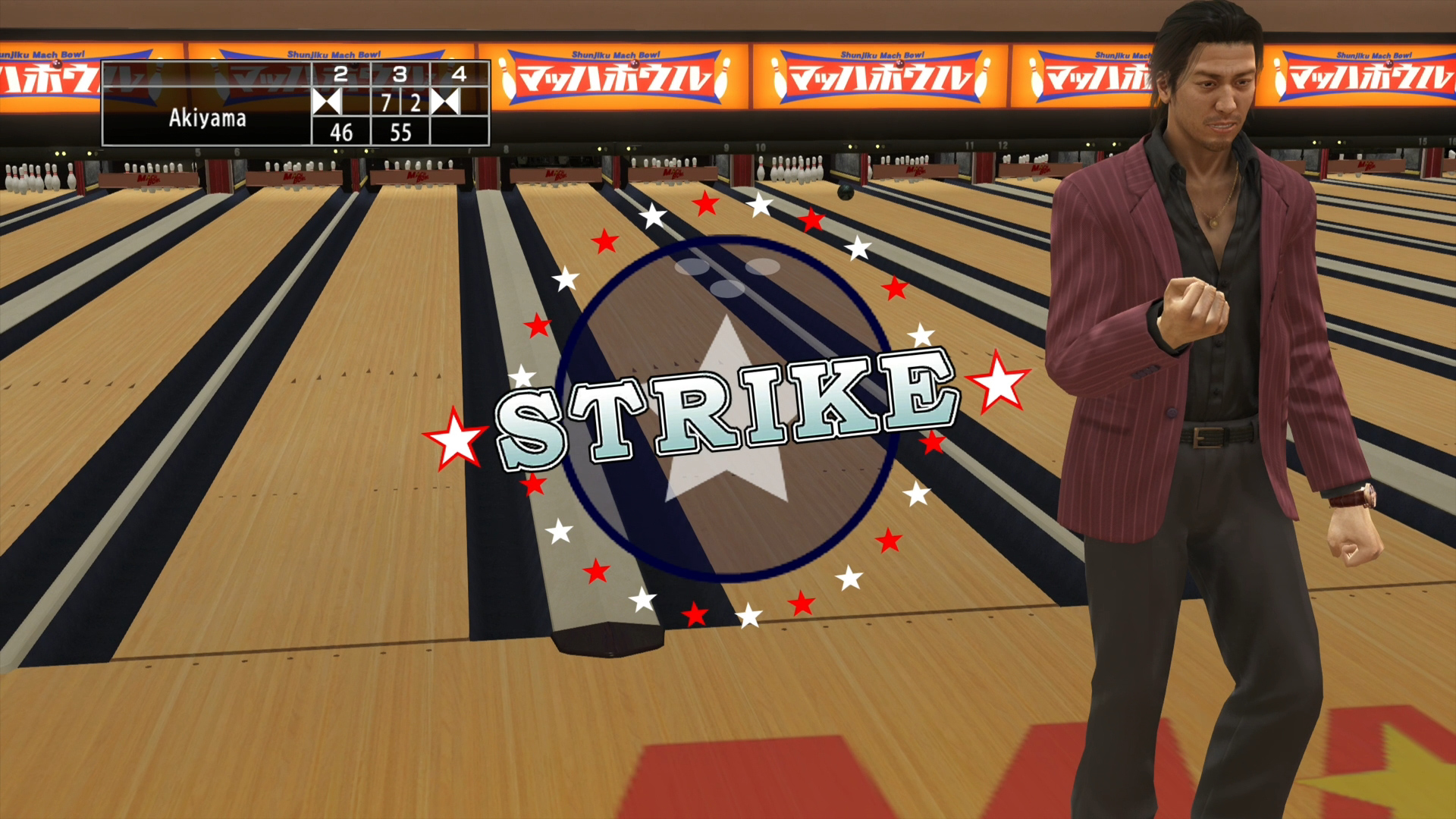
The list of distractions gets longer with every entry
The Yakuza series is certainly a saga, yet each game functions well on their own. Enough context is given each time to give the audience an understanding of each character’s histories and motivations. This is achieved through moments where the conflict is at rest, and you can see the characters when they aren’t in the middle of some major Yakuza-based drama. The overall pacing is similar to traditional Japanese cinema with slow long builds over long periods driven by intense, dramatic dialogue. This is accented with over the top action climaxes that range from the incredibly badass to the hysterically comical. While there are long cutscenes of characters talking, I don’t often find myself bored. There is subtly to the line delivery and the presentation and the way things are discussed as the story is steadily built. You don’t just hear information about an event for the sake of learning about those facts, you see and hear how a character feels about those facts. This gives the audience a lot of insight into characters, even in cases where the same things are discussed multiple times, and the way they talk about it changes depending on who they are talking to, which also provides a look into how characters feel about each other.
Each game in the Yakuza Remastered Collection delivers some fantastic voice acting, though all it is only in Japanese. I personally didn’t mind this as someone who isn’t a stranger to watching subtitled foreign films, but I could see that being a problem for others. I have to give huge credit to the actor’s ability to deliver the subtly needed for many of these scenes. There is respect to those of equal rank or fighting measure, authority towards those of lower rank, and softness towards his daughter and loved ones. It may take some practice and intentional listening to someone who isn’t as used to watching things in Japanese, but it is definitely worth the effort. As you wander through crowds you can also hear people talking and other various city sounds. The soundtrack suits each situation, but these tracks won’t be added to my recreational listening anytime soon.
Yakuza 3
Yakuza 3 features Kazuma Kiryu continuing on from the events of Kiwami (Yakuza 1) and Kiwami 2 (Yakuza 2) by running the Morning Glory orphanage located in a small, beachside town. Things seem to be going well, but it can never be quite that simple for the ex-yakuza that just wants to settle into a simple life. Rivalry, greed, and vendetta threaten to take the Morning Glory orphanage by tearing it down and building either a seaside resort or a military base. Kiryu decides to get to the bottom of things and save the orphanage, which means diving back into the depths of the yakuza life. Yakuza 3 is the roughest of the batch; this makes sense with it being the oldest game in the collection. However, for someone playing through these for the first time on the PS4, they may find the transition from the remakes Kiwami and Kiwami 2 to a remaster of Yakuza 3 a difficult one. The controls and animations can feel somewhat clunky and stiff compared to the rest of the series. Be prepared to look at some clearly lower resolution textures.
Take your time, and don’t be afraid to lower the difficulty to be able to still experience the great story this game has to offer.
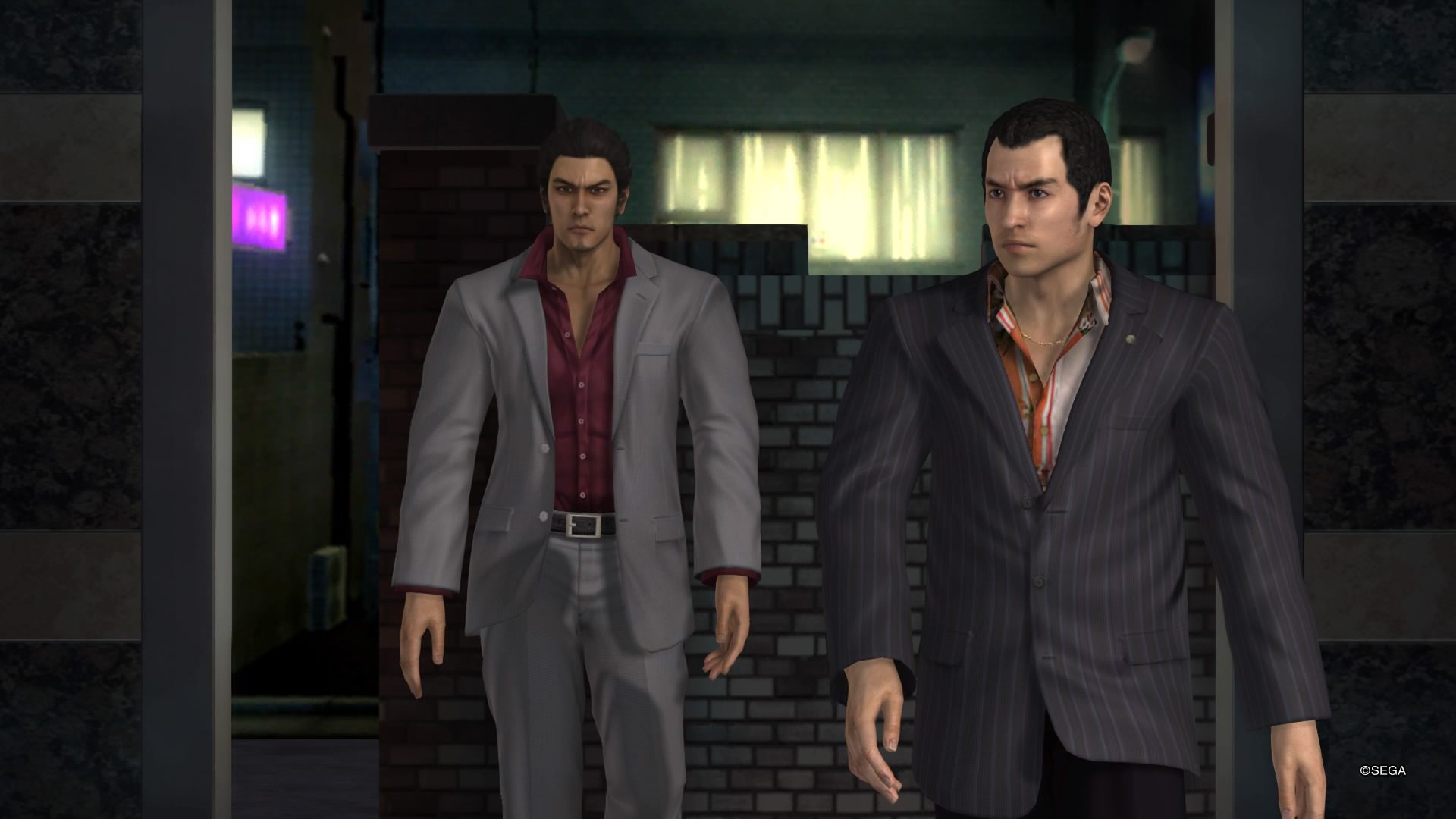
The highlight of Yakuza 3 is most definitely the story as the controls and visuals have aged the worst of the collection
Yakuza 4
Yakuza 4 immediately mixes things up by having the game broken up into sections that each feature a different character: Shun Akiyama, owner of Sky Finance, a loan company with some unusual lending methods, Taiga Saejima, a Yakuza hitman and brother to series regular Goro Majima, Masayoshi Tanimura, a dirty cop, and of course the series main protagonist Kazuma Kiryu. All of these stories merge into each other by the end in spectacular fashion. At the center is a story of rivalry, arrogance, and the murder of a high-ranking yakuza member. Yakuza 4 feels the most like following an intense crime thriller drama series and I loved it. Each character felt different without being confusing, and the fixes done to make the combat more fluid makes this game far better to control. Visually, Yakuza 4 is a major upgrade with more variety in the various citizens that walk around, weather patterns, and much higher resolution textures. The animation is still stiff at times, but still an improvement over Yakuza 3.

All of Yakuza 4’s players come together by the end in spectacular fashion
Yakuza 5
Yakuza 5 is the best looking game of the collection. Animations especially are much more natural-looking, though a few times I did notice some odd stuttering here and there. Yakuza 5 also continues with the theme of separating the game into sections with each featuring a different character. Kiryu, Akiyama, and Saejima make a return from Yakuza 4. For the first time in the series history, Haruka, Kiryu’s adoptive daughter, is playable, and so is Tatsuo Shinada, a brand new character to the Yakuza saga. While most of the games so far focus on exploring only a few small locales, Yakuza 5 expands things greatly by offering five distinct locales all across Japan. Each location is larger and even more packed with things to do than previous entries, including taxi and street racing mini-games. In my original review, I talked about spending too much time in cutscenes which may be true, but now I’d say I appreciate how much they add to the story.
This collection and the Kiwami remakes are an amazing opportunity to get into the Yakuza series with them all now available on PS4 and with Yakuza 7: Like a Dragon being just around the corner. While it isn’t unusual for a game series to span generations of hardware, what is unusual is to have them so tightly knit in terms of story and to have that story told in such a consistently well-crafted manner. While there a few staples of the Yakuza series I don’t enjoy, like the hostess game, the series as a whole is worth getting into. The Yakuza Remastered Collection is a great way to complete the set and is really only marred slightly by the roughness of Yakuza 3. Each game runs and looks better than ever, and includes cut and censored content from the original Western releases along with a much better English translation. These are certainly the definitive editions of these games and I highly recommend them, especially to fans of Japanese cinema. Though perhaps aim to get that sweet looking physical release versus the digital version.
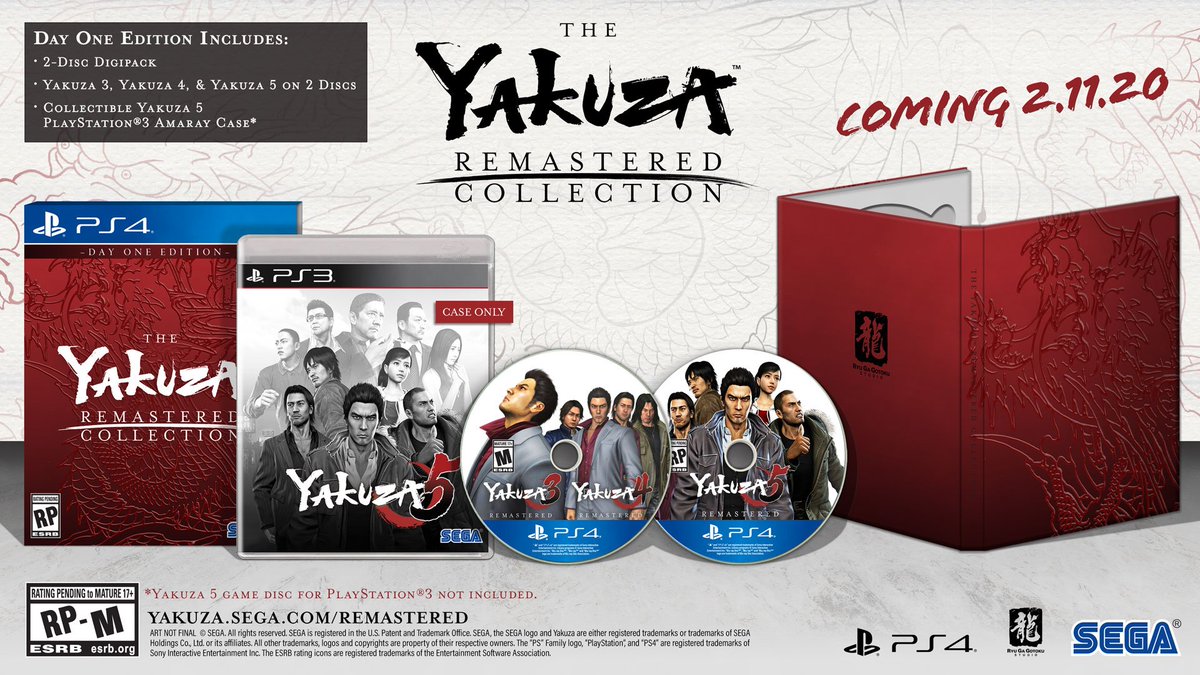
This would really stand out on a shelf!
A digital copy of The Yakuza Remastered Collection was provided for review purposes. More information can be found on the official website.
For more review content, check out my thoughts on Exit the Gungeon, an roguelike action title that follows up an indie classic. I also recently dove into the experimental world of The Longing, a game about patience that takes more than a year to finish.

